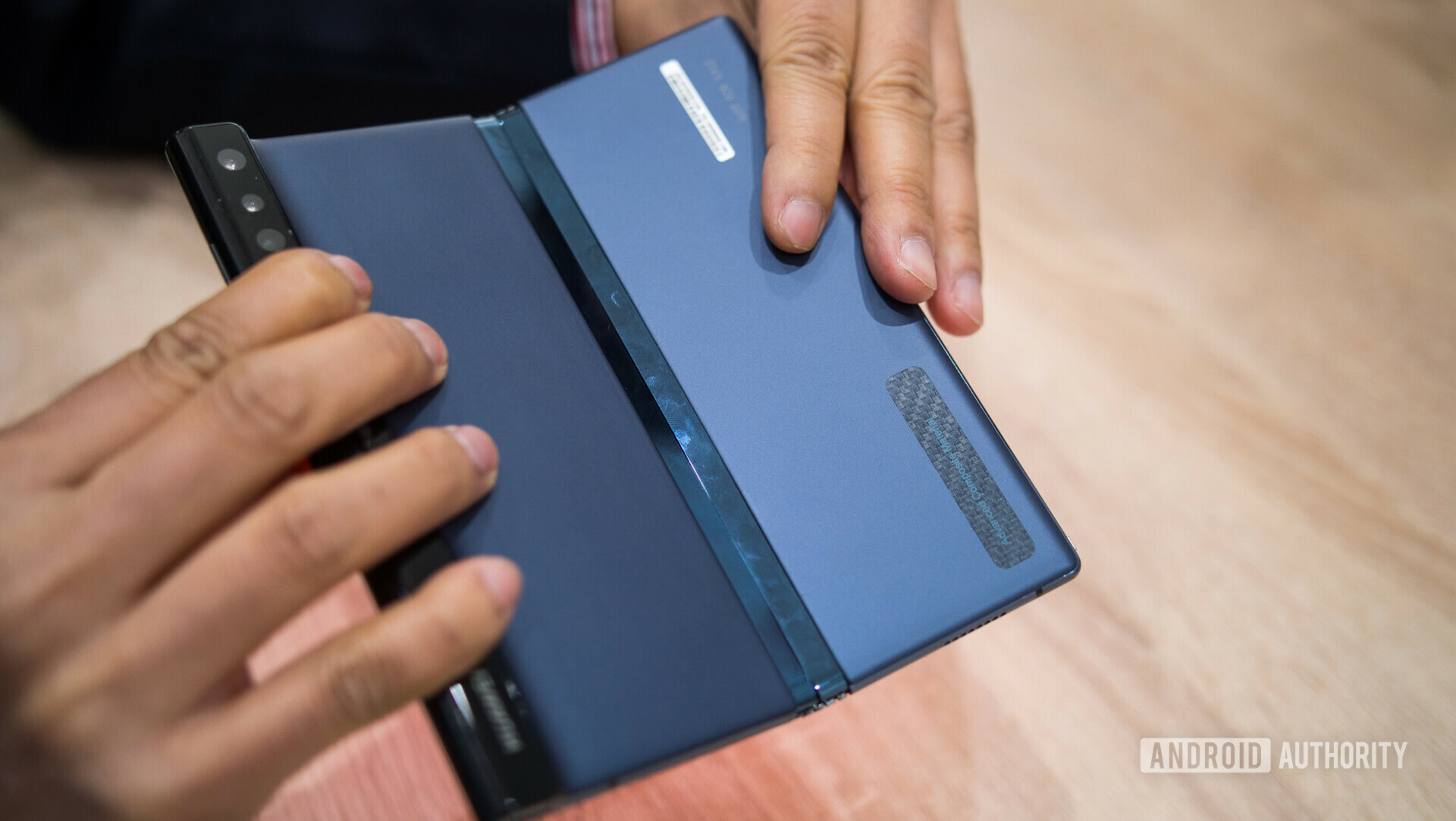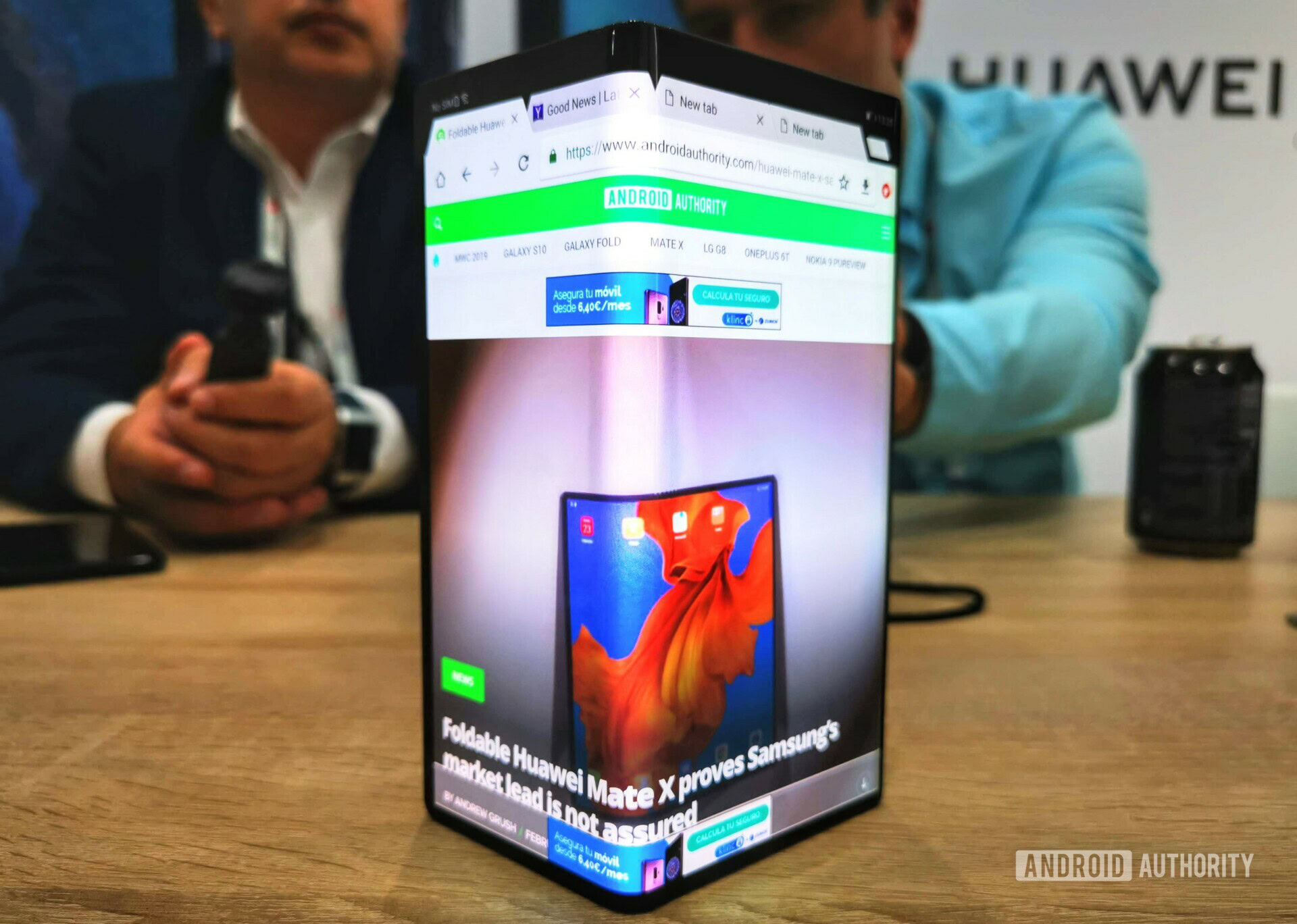Affiliate links on Android Authority may earn us a commission. Learn more.
Foldable phones have arrived, but are we there yet?

Foldable phones were, unarguably, the highlight of Mobile World Congress this year. Launched within a week by the two biggest smartphone makers in the world, the category got instant credibility, along with a lot of scrutiny.
While Samsung showcased the Galaxy Fold only from a distance, some media folks – including our very own Kris Carlon – did spend some time with the HUAWEI Mate X, albeit very briefly. Much has been said about the two devices not being ready for prime time, and hence Samsung’s and HUAWEI’s reluctance to put them in the hands of MWC visitors.
Of course, Samsung and HUAWEI are keen on painting foldable phones as the next evolution of personal computing devices, but are they?
The wow factor
Foldable phones are without doubt a technological marvel. While sci-fi movies might have convinced us that foldable displays were an obvious evolution, it’s absolutely mind-blowing that we have functional folding devices with beautiful OLED displays in our hands today. And it’s not just the foldable screen that’s impressive. Beneath the surface, the hinges on both smartphones are stunning pieces of engineering, not to mention the incredibly powerful specs we’ve grown accustomed to.
Are foldable phones solution to an actual problem?
Some geeks and early adopters among us, with $2000 in the pocket of course, may want to jump on the first-generation devices from HUAWEI and Samsung. Foldables are indeed a killer product category – in theory – and they’re definitely flaunt-worthy. But are foldable a solution to an actual problem?
Software

Much of the software showcased on the Galaxy Fold and Mate X has been underwhelming as yet. You get a bigger display, and that’s that. More map data, larger photos, and more screen estate while browsing the web.
Multitasking with three apps isn’t a massive leap, really, and mostly looks clunky. With almost square aspect ratio displays, most videos – a big selling point of a larger display – will play letterboxed to almost the same size as many larger smartphones in the market today.
Google took years to make Android workable on tablets, and this new form factor will likely need platform updates, as well as extensive software tinkering by OEMs before it truly offers a compelling experience. That’s clearly one of the reasons why the Galaxy Fold and the Mate X weren’t handed out to media for an extended time at MWC.
Hardware

Samsung and HUAWEI clearly rushed to be the first to the finish line with a foldable device (the Royole Flexpai doesn’t really count), while setting the groundwork for iterative improvements down the line.
While the build quality on Mate X looks solid, there is a bump in the display above the hinge. Many suspect this bump will only become more pronounced over time. Like anything you fold and refold repeatedly, it’s going to degrade. Also, hinges could loosen up over time like most products with hinges, including laptops, do.
There are too many unanswered queries at the moment.
On the Galaxy Fold, the screen doesn’t lie flat. Is that how it’s supposed to be? Is that comfortable? I don’t know. In the case of the HUAWEI Mate X, the display folds outwards. How do you protect the all-screen slab from scratches? It’s not even glass, but plastic, which is more prone to scuffs. There are too many unanswered queries at the moment.
There are also questions about battery life, a constant pain point for power users and those on the go. A slight battery size bump on a device with double the display area doesn’t sound too promising. Using a tablet as a secondary product, you can toss it back in the bag if the battery runs out or leave it to charge across the room. When it comes to your primary device, that’s not a compromise most will make.
What’s next?
These are early days for foldable phones. Smartphone makers will naturally try to throw different form factors at consumers to see what sticks. Foldable phones won’t be limited to the phone-to-tablet form factor we’ve seen so far.
Via patent filings, we’ve seen Motorola’s attempt at reincarnating its classic clamshell phone, the Moto Razr, by using a tall display that folds into a smaller phone with a smaller external display. This is the same approach ZTE is taking.
In January, Xiaomi teased its prototype foldable phone that folds like the HUAWEI Mate X, but on both sides, for a more compact smartphone experience. Samsung is also tipped to be working on two more foldable phones in different form factors.
Foldable phones won't be limited to the phone-to-tablet form factor.
Outside of the Android ecosystem, Microsoft has been working on adapting Windows 10 for its rumored Andromeda foldable device. This will be followed closely by foldable Windows devices from manufacturers including Lenovo and Dell.
The last word

I don’t want to be dismissive of this innovation (it’s incredible, really!), but I’d also be wary of calling it a new dawn for smartphones. Innovation in smartphones has reached a plateau, and it’s admirable to see some brands forge a new path. It’s what happens next that determines how far we go with foldables.
Of course, more use cases for foldables will emerge over time as the platform evolves and goes beyond our current usage and how we engage with our devices. Or maybe, folding devices will grow on us, like all-screen-and-no-keyboard smartphones, large phones with 6-inch+ displays, and other “quirky” things we got used to in the past.
I quite like the Mate X, honestly, but do I need it? Does it work for me? I’m uncertain at the moment. What do you think?